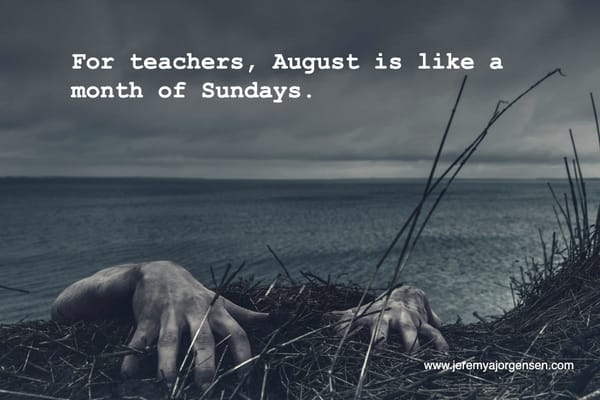5 Common Teaching Challenges and Strategies to Overcome Them

Disclaimer: If you are a teacher reading this, you rock! This article consists of things I’ve learned in my journey to becoming better at teaching. After 24 years, I still have students fall asleep in my class, kids don’t complete their school work on time, and some of my classes are really hard to manage. Somedays nothing seems to work. These are some things that have helped me, and I hope will help you as well. Yours in teaching solidarity, Jeremy.
Time Management: Teachers have to manage their time effectively to cover the curriculum, assess students' progress, and attend to administrative tasks that seem to grow year after year. To overcome this challenge try taking a few minutes at the beginning of each day to prioritize the most important tasks that need doing. You’ll be less likely to procrastinate if you develop a habit of taking breaks at regular intervals. Procrastination is like a credit card - it's a lot of fun until you get the bill. This TED Talk by Tim Urban does a great job of exploring the causes and impacts of procrastination.
Student Engagement: Keeping students engaged and motivated is a challenge faced by all teachers. In my classroom experience, this has become harder to do over the past five years. To overcome this challenge, try planning your lessons to include regular intervals, making sure to leave time for brain breaks. Find ways to mix things up. Create a balance between independent and group work, technology work, analog work, and games (here’s my favorite low tech game). Even though teaching is tiring, students feed off of your energy. If you’re animated and into your instruction, students are more likely to be engaged. Taking care of yourself by getting plenty of sleep will help elevate your energy levels. Giving students choices can also increase engagement.
Classroom Management - Managing a classroom full of students is a daunting task, but it can be made easier by setting up a classroom management plan that works for you. This plan should include clear rules and expectations that are communicated to the students. Consider using positive reinforcement to encourage good behavior and academic progress, and take the time to build positive relationships with each student. Support from colleagues and administrators will also be invaluable in managing a classroom. If possible, observe students in different classrooms to see how your colleagues manage the room. It’s alright to ask for help. Even the best teachers need some help.
Assessment: Assessing students' progress and providing feedback is essential to ensure learning outcomes are met. However, assessment can be time-consuming and challenging, particularly when dealing with large classes. To overcome this challenge, incorporate a variety of assessment strategies, such as formative and summative assessments, peer and self-assessment, and use technology to automate grading. Formative assessments are powerful and don’t need to be time-consuming. Once a solid foundation is set, peer critique can also be a valuable part of your assessment strategy. Portfolios are a powerful tool for promoting self-reflection, goal-setting, and metacognition in elementary and middle school students.
Parent Communication: Communicating with parents is crucial to ensure students' academic success. However, communicating with parents can be challenging, particularly when dealing with difficult or unresponsive parents. Start communicating with parents right away at the beginning of the school year and then continue sending home information on a regular basis. You could send regular newsletters or updates and/or a class website or social media page. Using technology can help you reach parents in ways that work for them. Here are 7 tech tools that can help improve teacher-parent communication.
Conclusion: Managing a classroom can be a challenging task, but there are strategies that can help overcome common challenges. Effective time management, student engagement, classroom management, assessment, and parent communication are all important areas for teachers to focus on. By prioritizing the most important tasks, incorporating brain breaks and games, setting clear rules and expectations, using a variety of assessment strategies, and utilizing technology to communicate with parents, teachers can create a positive learning environment for their students. Building positive relationships with students and seeking support from colleagues and administrators can also be invaluable in managing a classroom.
🗒 Try using Notion to organize your personal and professional life, group projects, and everything else you learn along the way #NotionPartner.





